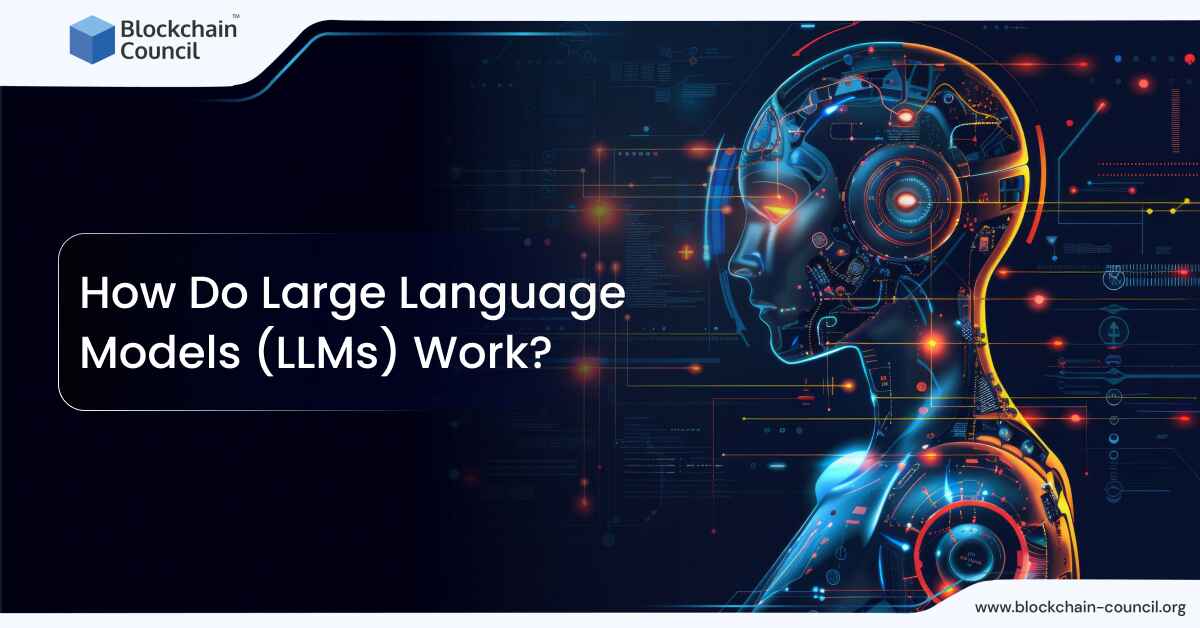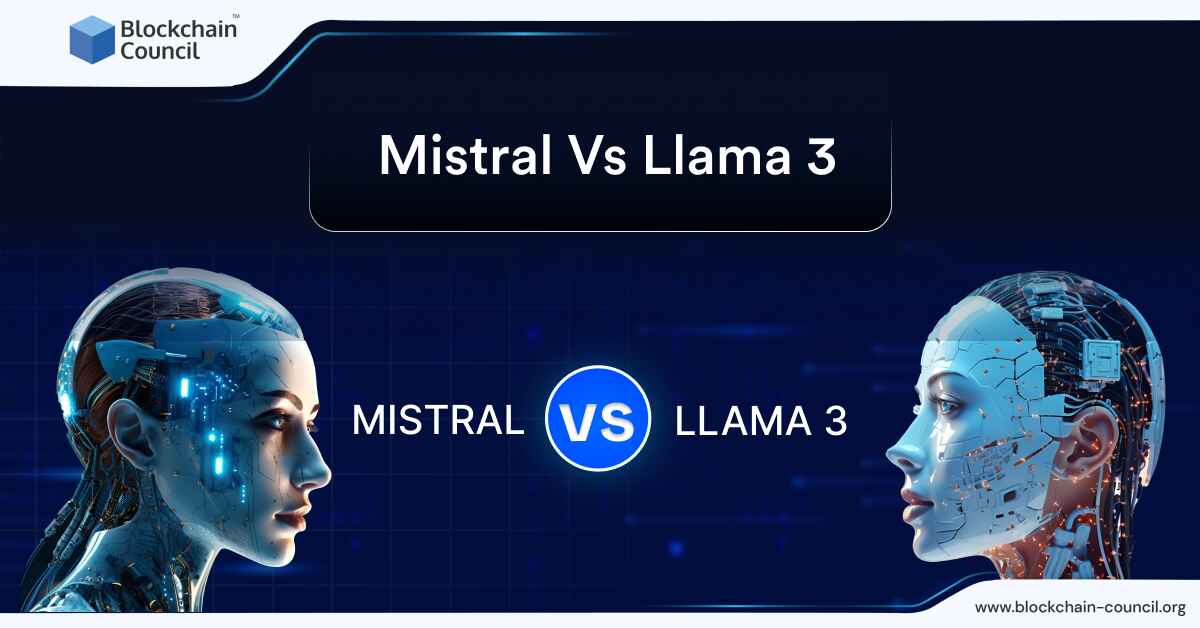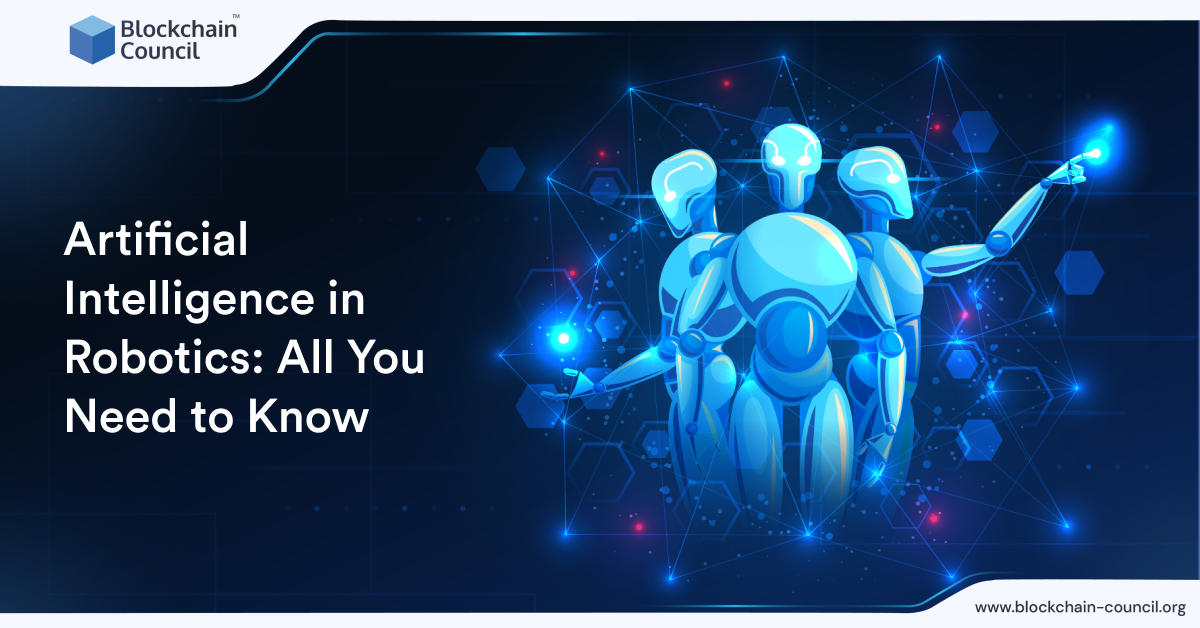
- Blockchain Council
- October 21, 2024
Have you ever chatted with a virtual assistant and wondered how it understands and responds so well? Large Language Models (LLMs) are behind these smart interactions. Let’s understand how LLMs actually work!
Artificial Intelligence and Its Layers
Artificial Intelligence (AI) is a technology that enables machines to perform tasks that usually require human intelligence. These tasks include learning, reasoning, problem-solving, perception, and language understanding. AI is composed of several layers, each serving a different function.
- Reactive Machines: These are the most basic type of AI. They respond to specific inputs with predefined outputs and do not store past experiences to influence future actions. An example is IBM’s Deep Blue chess computer.
- Limited Memory: This type of AI can use past experiences to inform future decisions. It can perform more complex tasks than reactive machines. Self-driving cars use limited memory AI to navigate roads by analyzing past and present data.
- Theory of Mind: This advanced level of AI aims to understand human emotions, beliefs, and intentions. While still theoretical, it would enable machines to interact socially with humans.
- Self-Aware AI: The most advanced form, self-aware AI, possesses consciousness and self-awareness. It is a long-term goal and remains speculative at this stage.
What is Machine Learning?
Machine Learning (ML) is a core component of AI focused on developing systems that learn from data. Instead of being explicitly programmed to perform a task, these systems use algorithms to parse data, learn from it, and make decisions based on what they have learned. This is achieved by training algorithms on a dataset, allowing them to improve their accuracy over time. For example, ML can be used for recognizing speech, recommending products, and detecting fraudulent activities.
What is Deep Learning?
Deep Learning is a specialized subset of Machine Learning that structures algorithms in layers to create an “artificial neural network” that can learn and make intelligent decisions on its own. Deep Learning models are designed to analyze data with a logic structure similar to how humans think and learn. This allows these models to process data in sophisticated ways, such as recognizing objects in images or translating speech in real-time.
What are Large Language Models?
Large Language Models (LLMs) are advanced AI systems designed to understand and generate human language. They are trained on vast amounts of text data. These models process vast amounts of text to learn patterns and structures of language, allowing them to perform tasks such as answering questions, writing essays, and even generating code. They are a type of artificial intelligence that focuses on natural language processing. If you’re interested in learning more about LLMs, you can read our detailed article here.
How Do Large Language Models (LLMs) Work?
LLMs function through a combination of deep learning techniques and massive computational power. Here’s a simplified explanation of their working process:
- Training on Large Datasets: LLMs are trained on extensive datasets containing diverse text sources like books, articles, and websites. This training helps the model understand grammar, facts, reasoning abilities, and context.
- Tokenization: This process converts text and other data into smaller units like words or subwords, which the model can process.
- Neural Networks and Parameters: These models utilize neural networks, particularly transformer architectures, with billions of parameters. Parameters are the learned weights in the network that adjust during training to minimize errors in predictions.
- Contextual Understanding: During training, the model learns to predict the next word in a sentence. Over time, this helps the LLM understand context, relationships between words, and various language nuances.
- Generative Capabilities: Once trained, LLMs can generate human-like text. Given an input prompt, they can continue the text in a coherent and contextually appropriate manner, making them useful for tasks like chatbots, content creation, and language translation.
- Fine-Tuning: For specific applications, LLMs undergo fine-tuning, where they are trained on domain-specific data to enhance their performance in particular areas, such as legal documents, medical texts, or coding.
- Inference: Once trained, the model can generate human-like text based on prompts. It predicts the most likely sequence of words that should follow a given input, allowing it to create coherent and contextually appropriate responses.
- Continuous Learning: Some models are continuously updated with new data to improve their accuracy and relevance over time.
Image Classification Example
Image classification involves teaching an AI model to identify and categorize objects within images. The process begins with collecting a large set of labeled images. The model is trained on these images, learning to recognize patterns and features such as shapes, colors, and textures.
The LLM processes these images using convolutional neural networks (CNNs) which are designed to handle the grid-like topology of images. During training, the model adjusts its internal parameters to minimize errors in its predictions. After sufficient training, the model can accurately classify new, unseen images by matching them to the patterns it learned during training.
For example, if an LLM is shown an image of a bird in flight, it might generate descriptive text like “a bird flying,” which it can then classify under the category “birds”.
Example:
- Task: Classify images as either “tiger” or “lion.”
- Process: We feed the model thousands of labeled images of tigers and lions. The model learns to recognize features like fur patterns, ear shapes, and other distinguishing traits.
- Outcome: When given a new image, the model can accurately determine if it is a tiger or a lion.
Sample Scenario: You upload a photo of a lion to an app. The app uses an LLM to analyze the image and quickly tells you whether it is a lion or not.
Text Classification Example
Text classification involves categorizing text into predefined groups. This process starts with gathering a large dataset of labeled text samples. The LLM, such as GPT-4, is trained on this data to understand various linguistic patterns and structures. The training involves using a transformer architecture, which excels at processing sequential data like text.
Transformers use mechanisms like attention to focus on relevant parts of the input text. Once trained, the model can classify new texts by comparing their patterns to those learned during training. This ability is particularly useful for applications like content filtering, document organization, and more.
For example, suppose you have a text saying, “The stock market faced a significant downturn today.” An LLM might classify this under “financial news” by recognizing key phrases linked to financial activities.
Example:
- Task: Categorize emails as “spam” or “not spam.”
- Process: The model is trained on a dataset of emails labeled as spam or not spam. It learns to recognize patterns and keywords often found in spam emails.
- Outcome: When a new email arrives, the model analyzes the text and decides whether it is spam.
Sample Scenario: Your email service automatically filters out spam emails into a separate folder, ensuring that your inbox only contains relevant messages.
Sentiment Classification Example
Sentiment classification is a type of text classification that focuses on determining the sentiment expressed in a piece of text, such as positive, negative, or neutral. This is particularly useful for analyzing customer reviews, social media posts, or any user feedback. To achieve this, the model is trained on a large dataset of texts labeled with their corresponding sentiments. During training, the LLM learns to associate certain words and phrases with specific sentiments.
For instance, words like “great” or “fantastic” are often associated with positive sentiments, while words like “terrible” or “awful” indicate negative sentiments. After training, the model can predict the sentiment of new texts by identifying and evaluating these key words and phrases.
Example:
- Task: Determine if a movie review is positive or negative.
- Process: The model is trained on a large number of movie reviews labeled with their sentiments. It learns to associate certain words and phrases with positive or negative sentiments.
- Outcome: Given a new review, the model can accurately predict whether the review expresses a positive or negative sentiment.
Sample Scenario: You write a review for a movie you just watched. An LLM-based system analyzes your review and categorizes it as positive, which helps others decide if they want to watch the movie.
How Do LLMs Generate Natural Language?
Large Language Models (LLMs) like GPT and BERT use a method called deep learning, specifically a type of neural network known as a transformer. These models are fed huge amounts of text data, which they use to learn patterns in language.
When generating text, they predict the next word in a sentence based on the context provided by the previous words, continually adjusting their predictions based on the input they receive. It does this repeatedly, word by word, until the desired length or content is achieved. The key to this process is the training on vast amounts of data, which helps the model learn the intricacies of language, including grammar, syntax, and semantics. This allows them to produce text that is coherent and contextually appropriate.
What Does GPT Mean?
GPT stands for Generative Pre-trained Transformer. It’s a type of LLM developed by OpenAI. The “Generative” part refers to the model’s ability to generate text. “Pre-trained” indicates that the model is trained on a large corpus of text data before being fine-tuned for specific tasks. “Transformer” refers to the architecture used, which relies on attention mechanisms to process input data efficiently. This architecture allows GPT models to handle long-range dependencies and understand context better than previous models like RNNs (Recurrent Neural Networks).
Phases of LLM training
The training of LLMs involves two main phases: pre-training and fine-tuning.
- Pre-training: In this phase, the model learns from a large, diverse dataset that includes text from various sources on the internet. This step uses unsupervised learning, meaning the model looks for patterns and structures in the text without explicit labels. The goal is to learn the general features of language, such as word relationships and grammar. This process can be very resource-intensive, requiring substantial computational power and time.
- Fine-tuning: After pre-training, the model undergoes fine-tuning. Here, it is further trained on a smaller, more specific dataset tailored to a particular task, such as answering questions or summarizing text. This phase often uses supervised learning, where the model learns from labeled examples. Fine-tuning helps the model adapt its general language understanding to perform specific tasks more accurately. Techniques like Reinforcement Learning from Human Feedback (RLHF) are also used in this phase to improve the model’s performance based on user interactions.
Hallucinations in LLMs
LLMs sometimes produce outputs that seem plausible but are factually incorrect or nonsensical. This phenomenon is known as “hallucination.” For instance, if you ask for the president of a country and the model provides a wrong name, that’s a hallucination. This happens because the model, despite its intelligence, lacks real-world awareness and often relies solely on patterns in data it was trained on, which may be outdated or incorrect.
Tips is Mitigate Hallucinations in LLMs
To reduce hallucinations in LLMs, follow these practical tips:
- Update and Refine Data: Regularly updating the training data helps the model stay current rather than relying on outdated information.
- Use Specific Prompts: Being specific in your questions helps the model to provide more accurate answers. For example, instead of asking “Who is the CEO?” specify the company.
- Cross-Check Information: Always verify the model’s output with reliable sources, especially for critical information. Do not take the model’s first response as the truth without further investigation.
- Apply User Feedback: Incorporate feedback into the model’s training process. This helps in refining its responses based on real user interactions.
- Incorporate Human Oversight: Use human reviewers to verify the information generated by LLMs, especially in critical applications like healthcare or legal advice.
Conclusion
Large Language Models change the way we interact with technology. By learning from vast amounts of text, they understand and generate human-like responses. As these models improve, they promise even more impressive capabilities. Knowing how they work gives us a glimpse into the future of AI and its potential to make our lives more convenient and efficient.
FAQs
What is a Large Language Model (LLM)?
- Advanced AI system designed to understand and generate human language.
- Trained on vast amounts of text data from various sources.
- Uses deep learning techniques, particularly neural networks.
How are Large Language Models trained?
- Training on Large Datasets: Uses diverse text sources like books, articles, and websites.
- Tokenization: Converts text into smaller units like words or subwords.
- Neural Networks: Utilizes transformer architectures with billions of parameters.
- Contextual Understanding: Learns to predict the next word in a sentence.
- Fine-Tuning: Trained on domain-specific data for specific applications.
What are the applications of Large Language Models?
- Chatbots: Provides human-like interactions in customer service.
- Content Creation: Generates articles, essays, and other written content.
- Language Translation: Translates text between different languages.
- Text Classification: Categorizes text into predefined groups like spam detection.
- Sentiment Analysis: Determines the sentiment expressed in text, such as positive or negative reviews.
How can hallucinations in LLMs be reduced?
- Update and Refine Data: Regularly update training data.
- Use Specific Prompts: Ask specific questions for more accurate answers.
- Cross-Check Information: Verify the model’s output with reliable sources.
- Apply User Feedback: Incorporate feedback into the model’s training process.
- Incorporate Human Oversight: Use human reviewers for critical information verification.





































































 Guides
Guides News
News Blockchain
Blockchain Cryptocurrency
& Digital Assets
Cryptocurrency
& Digital Assets Web3
Web3 Metaverse & NFTs
Metaverse & NFTs
